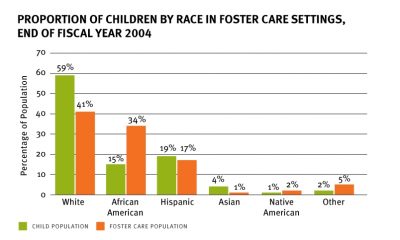It's Serious
In 2004, African-American children totaled 34% of the children in foster care, about twice their proportions in the general child population.

The HHS National Incidence Study has shown since the early 1980s that children of all races and ethnicities are equally likely to be abused or neglected; however, African American children, and to some extent other minority children, have been significantly more likely to be represented in foster care.
The Government Accountability Office (GAO) was asked to analyze the factors influencing the proportion of African American children in foster care, the promising strategies implemented by states and localities to address the disproportion, and ways in which federal policies may have influenced African American representation in foster care.
The GAO investigated using a combination of data from a nationwide survey, a review of research and policies, state site visits, analyses of child welfare data, and interviews with researchers, HHS officials, and other experts.
This report details there methodology and findings, strategies thus far, as well as presents recommendations for changes in policies, funding, and support strategies to address disproportionality.
Despite the fact that children of all races are equally as likely to suffer from abuse and neglect, there is a significantly greater proportion of African-American children in foster care than children of other races and ethnicities.

We hope you'll find value in this report. We’d love to get a little information from you, which we'll use to notify you about relevant new resources.